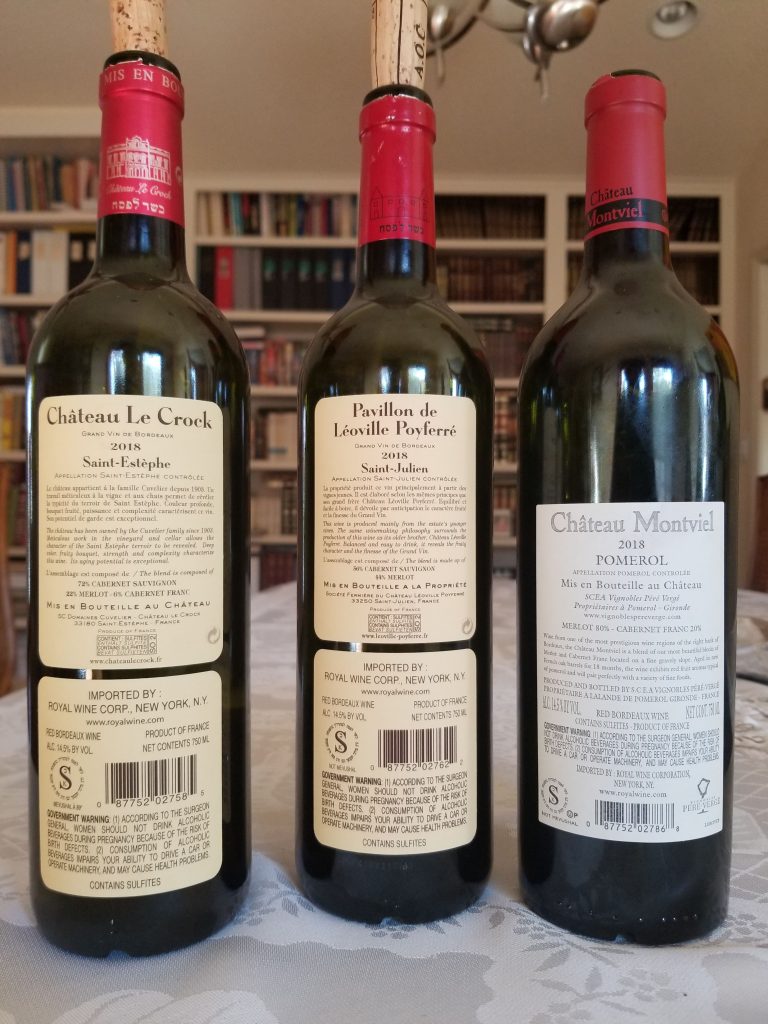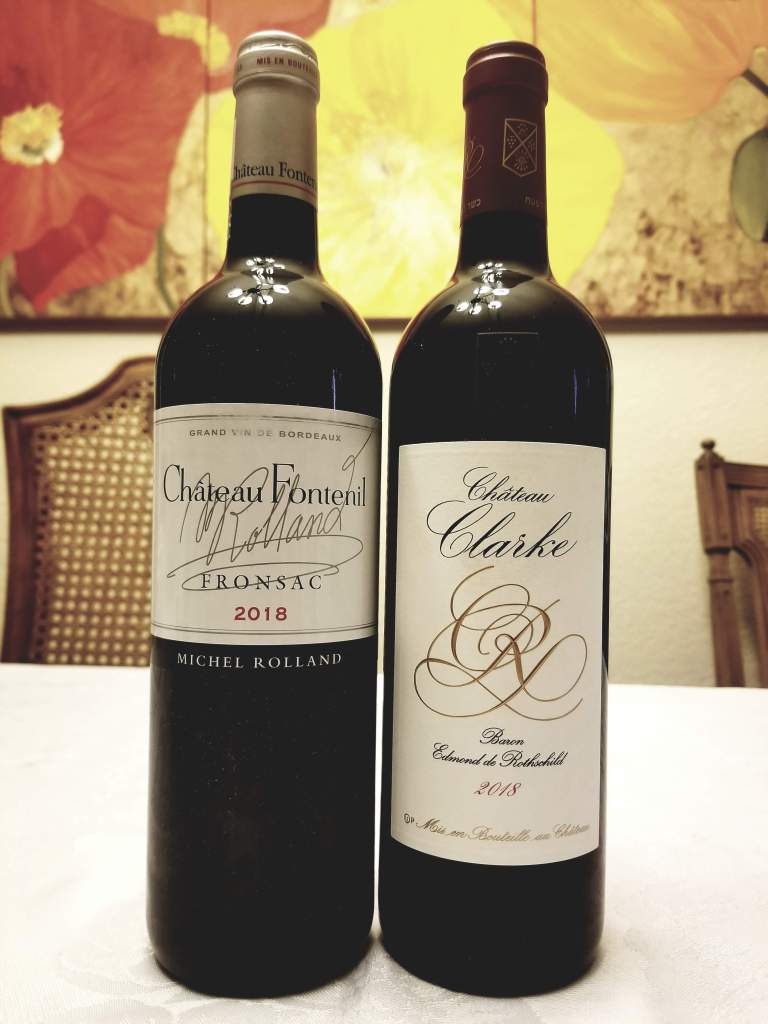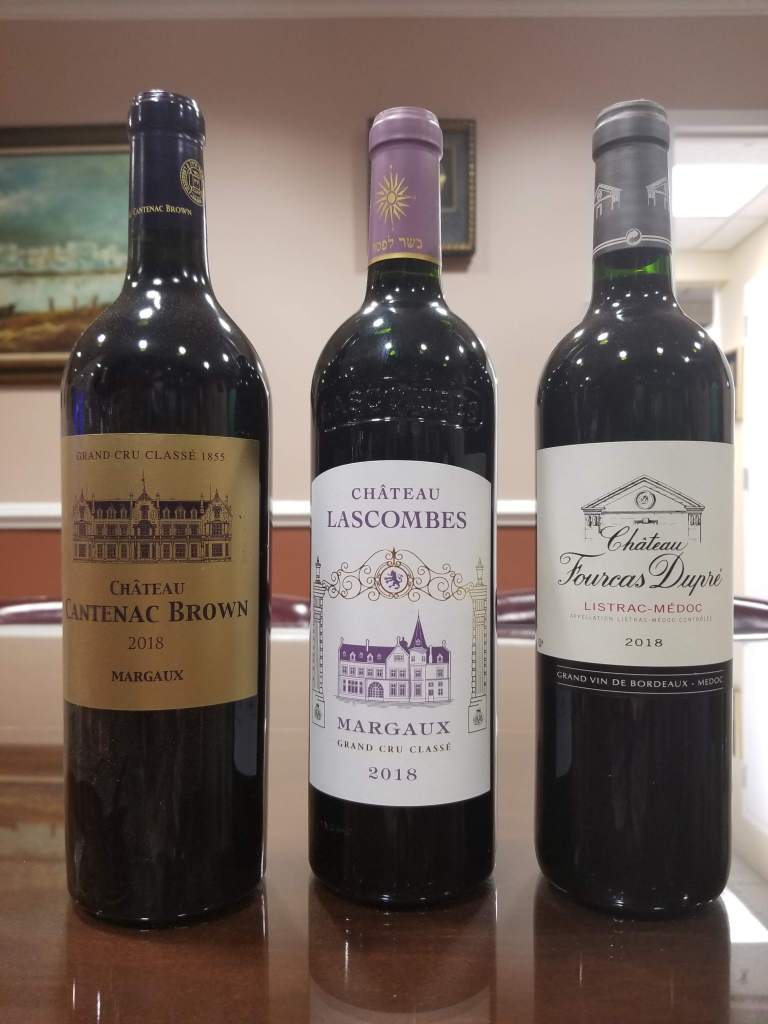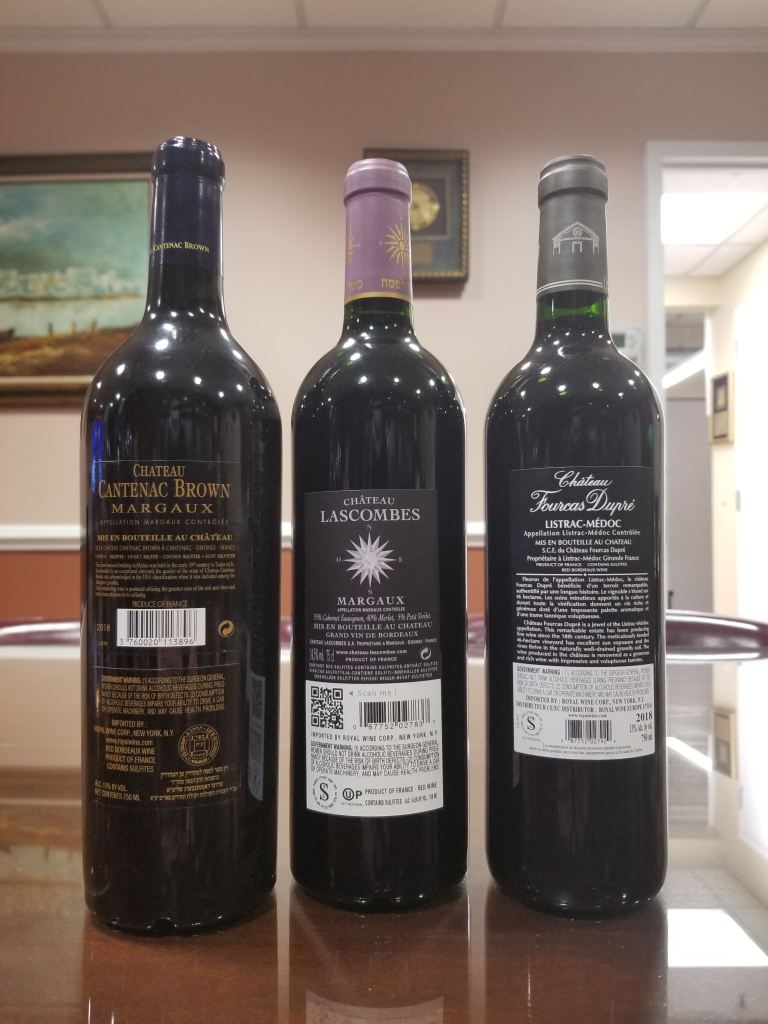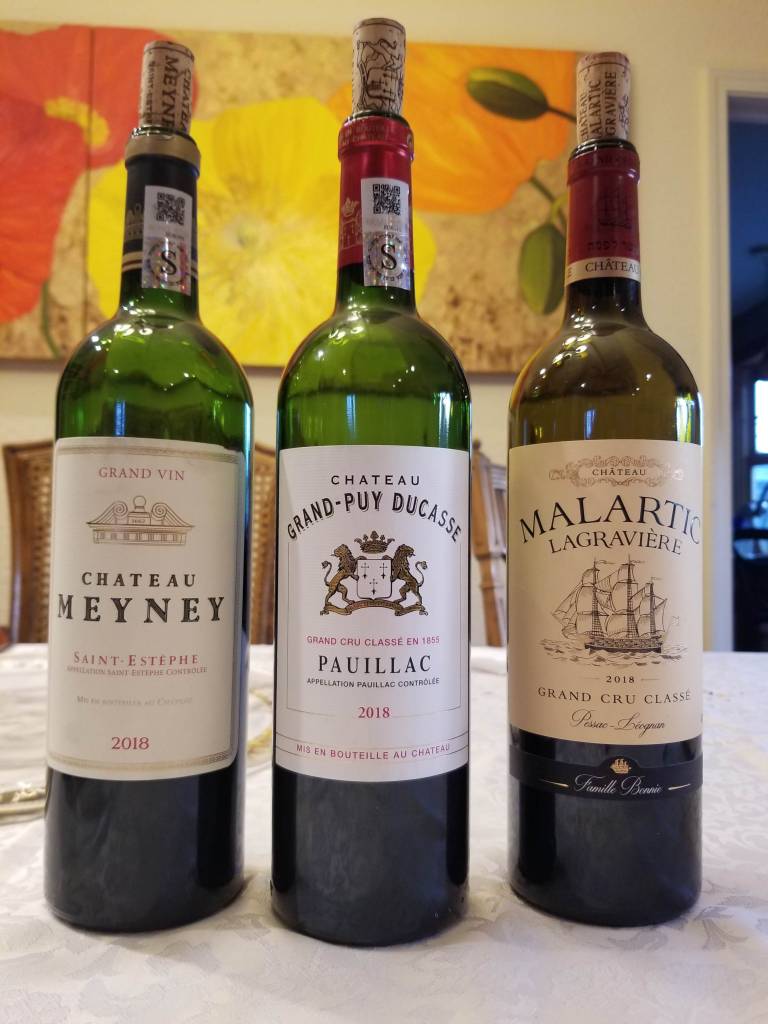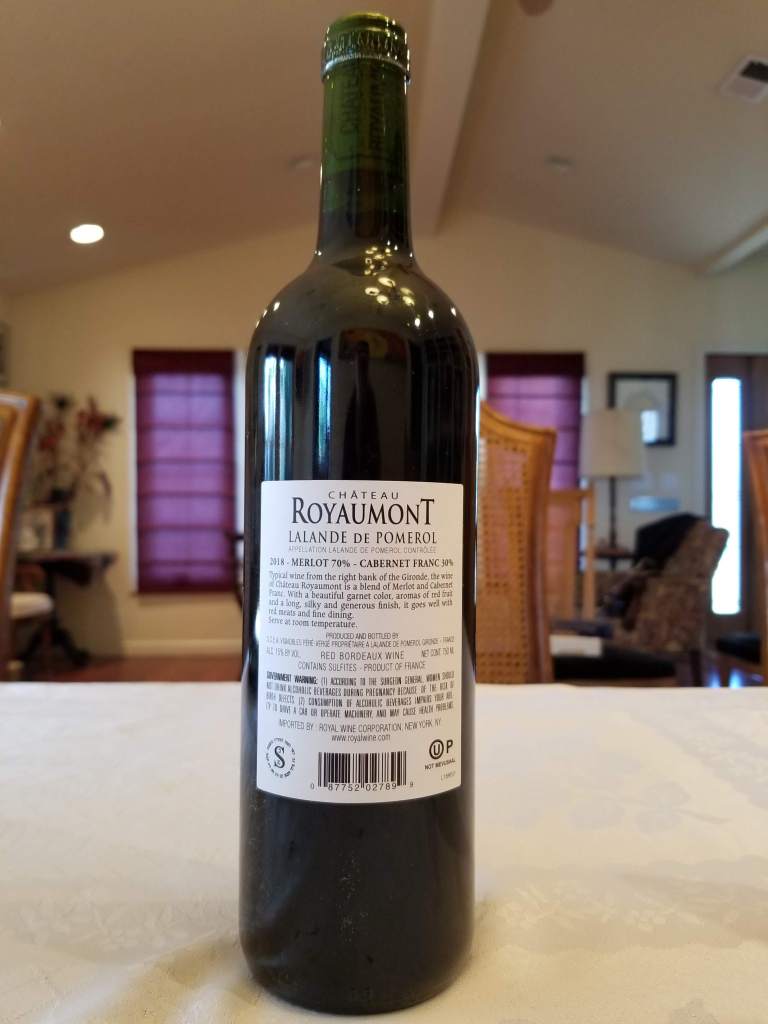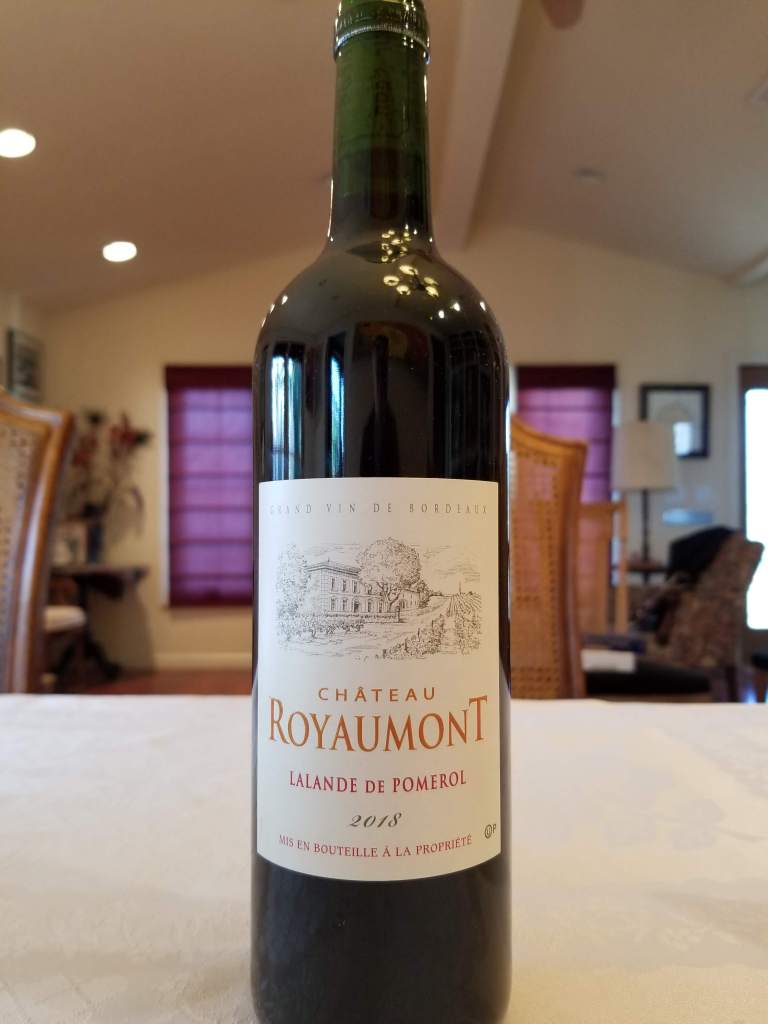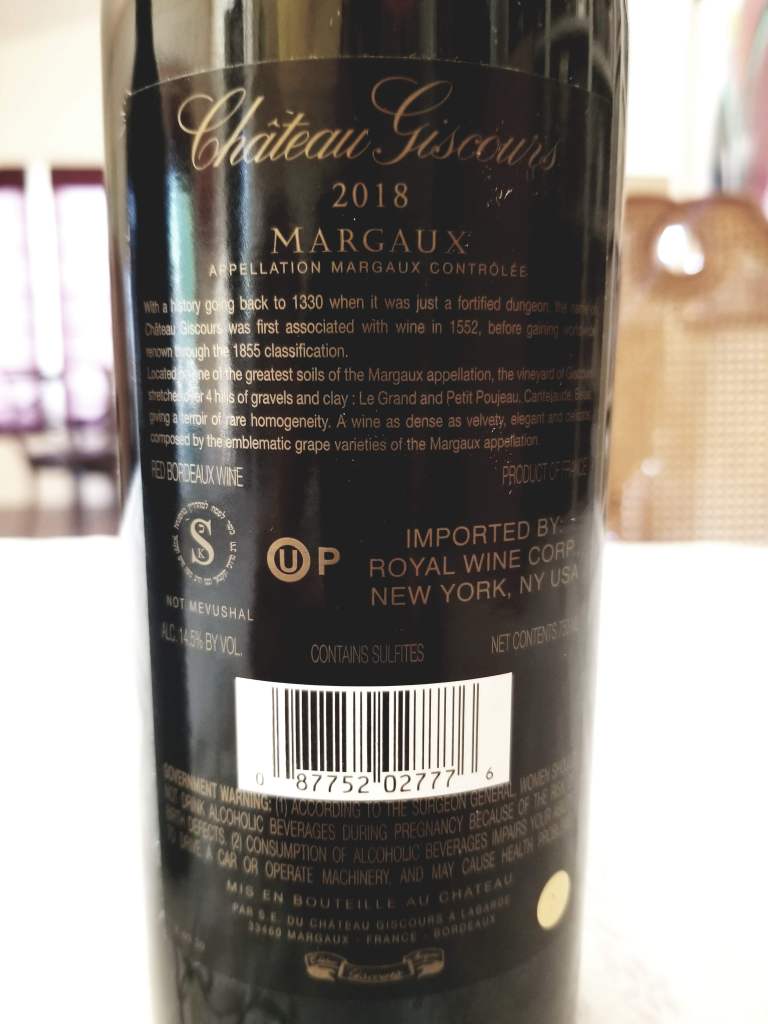Blog Archives
My top 25 kosher wines of 2021, including the Wine of the Year, Winery of the Year, the Best Wine of the Year, and the Best Mevushal wines of the year awards
Like last year, I wanted to make this post short and sweet – so the criteria are simple. I could care less about price, color, or where it was made. All that matters is that it is/was available this year sometime to the public at large and that I tasted it in a reliable environment, not just at a tasting, and that it was scored a 92 or higher. Also, there are a few lower-scoring wines here because of their uniqueness or really good QPR.
We are returning with the “wine of the year”, “best wine of the year” along with “Winery of the Year”, and “Best White wine of the year”, along with a new one – “Best Mevushal wine of the year”. Wine of the year goes to a wine that distinguished itself in ways that are beyond the normal. It needs to be a wine that is easily available, incredible in style and flavor, and it needs to be reasonable in price. It may be the QPR wine of the year or sometimes it will be a wine that so distinguished itself for other reasons. The wines of the year are a type of wine that is severely unappreciated, though ones that have had a crazy renaissance, over the past two years. The Best Wine of the year goes to a wine well worthy of the title.
The Mevushal wine of the year is something I personally dread. I understand the need for a wine that can be enjoyed at restaurants and events, but when we start seeing Château Gazin Rocquencourt and Chevalier de Lascombes go Mevushal – we know we have a problem. As I have stated in the past, if this is what needs to happen, then please sell both options as many do with Peraj Petita/Capcanes, Psagot wines, and many others. Still, it is a wine and as such, it needs a best-of-the-year moniker, so this will be the first year where we do it.
This past year, I tasted more wines than I have ever, in the past. Now to be clear here, I did not taste many Israeli wines as they have proven to me over and over again, even with the much-ballyhooed 2018 vintage that they are not worth me spending my money on. So, no I have not tasted as many Israeli wines as I have in the past, but overall, this is the largest number, for me. I spent a fair amount of time tasting all the French and European wines I could get my hands on and I feel that is where I added the most value, IMHO. For those that like the Israeli wine style – other writers/bloggers can point you in some direction.
IMHO, this past year brought the best wines I have seen in a long time.
IMHO, this past year brought the best wines I have seen in a long time. No, I do not just mean, the lovely 2019 Chateau Pontet Canet, but overall, the scores garnered this year are on keel with my top wines of 2017, which included the best wines from 2014 and 2015 vintages. Nothing has come close since that list, until this past year – so that really excites me as there are still a few wines from the 2019 vintage that I have yet to taste.
As I will talk about in my year in review post, 2014 will come out as the best vintage for the past decade in France. That is a hotly debated subject, but IMHO, in the world of kosher wine, there were FAR more best wine options in the 2014 vintage than any other vintage in the past decade. That may not be the case for non-kosher wines, but news flash, I do not drink non-kosher wines, or even taste them, and further this blog is about kosher wines. The 2018 vintage may well have some serious “best wine of the year” candidates, but sadly, not all of those wines are here and I could not travel to France to taste them all, as I do commonly. The 2019 vintage may have as many once we taste them all, but for now, the 2014 vintage across all wine producers has created a far more complete and consistent product than any of the years, up until 2019.
There are also interesting wines below the wines of the year, think of them as runner-up wines of the year. There will be no rose wines on the list this year. If last year, I thought the roses were pure junk, this year, you can add another nail in the coffin of rose wines, IMHO. Thankfully, the task of culling the bounty of great wines to come to these top wines was more a task of removing than adding. We are blessed with a bounty of good wines – similar to 2017. To highlight the last point, I scored 109 wines with a 92 or higher, and 66 of those were given the QPR score of WINNER (or WINNER in FRANCE).
The supreme bounty comes from the fact that Royal released the 2019 French wines a bit early! Throw in the incredible number of kosher European wines that are coming to the USA and being sold in Europe and this was truly a year of bounty for European kosher wines.
Now, separately, I love red wines, but white wines – done correctly, are a whole other story! Sadly, in regards to whites, we had no new wines from Germany, still. Thankfully, we have some awesome new entries, from the 2019 Chateau Malartic and the 2019 Château Gazin Rocquencourt (NON-Mevushal), and the new 2020 Meursault!
The wines on the list this year are all available here in the USA, in Europe, and a few can be found in Israel, as well. The wine notes follow below – the explanation of my “scores” can be found here and the explanation for QPR scores can be found here:
The 2021 kosher wine of the year – is new!
This is a new wine for the kosher wine market and it sits a bit above where I would like it, price-wise, but it is the best wine for a price that is still comfortable for the value. It is one of the rare wines that score a GREAT QPR – when priced above 100 dollars. Still, it fits right there to make it GREAT. There were so many to choose from this year – I am so happy to restate, but in the end, this award goes to a reasonably priced wine that garnered the highest score. The 2014 and 2015 Domain Roses Camille was an option, but the price pushed out of the competition. There was the 2017 Elvi Clos Mesorah, at a far better price than the LaGrange, but again, the LaGrange fit right in that space, barely above the Clos (quality-wise), and within the range of QPR. There was the 2018 Malartic and the 2017 Leoville, but they, like the DRC, were priced out. Finally, there was the 2019 Jean Luc et Paul Aegerter Nuits St. Georges 1er Cru, Les Vallerots, but that wine is almost impossible to find, sadly!
If there was a single QPR WINNER that blew me away – it would be the 2012 Château Cru Ducasse – in France, I can see no reason not to buy as much of this as humanly possible! Either way – the new Chateau LaGrange is a wonderful wine and one that is worthy of the 2021 wine of the year!
2019 Chateau LaGrange Grand Cru Classe En 1855, Saint-Julien – Score: 94+ (QPR: GREAT)
WOW, what wine for a 12.5% ABV wine, come on, the next time someone says I need to wait for the phenolics to talk with me, the answer is this wine! This wine is a blend of 80% cabernet Sauvignon, 18% Merlot, & 2% Petit Verdot.
The nose on this wine is lovely and perfumed with rich minerality, dense loam, graphite, smoke, roasted animal, clay, black and red fruit, all wrapped in more dirt, tar, and licorice, wow!
The mouth on this medium-plus bodied wine is beautiful, the acid is perfect, balanced and tart, elegant and layered, with lovely raspberry, plum, dark currants, hints of blue fruit, with ripe cassis, scraping mineral, dirt, loam, roasted herbs, menthol, with sweet vanilla, and lovely licorice.
The finish is long, with draping tannin, scraping mineral, and lovely tar, loam, nice leather, and rich garrigue, really lovely! Drink from 2031 until 2042. (tasted November 2021) (in Paris, France) (ABV = 12.5%)
My latest round of both new and old winners and some more losers for 2019
After my long hiatus, I am happy to say that this post brings me current to wines I want folks to know about, both good and bad. Thankfully for you, it does not include at least 45 roses, white, and red wines that were so horrible that I see no value in posting their NA scores here.
However, two wines that need warning are the 2017 Chateau Lacaussade Saint-Martin
and any wine from Capcanes Cellars made from 2015 and on, other than the 2015 Capcanes Pinot Noir and the lovely 2015 Capcanes Samso Carignan. To me, this is truly sad Capcanes was a rockstar and a perennial goto and QPR wine, other than there roses. Now, they have soldout to Parker’s view of wine and I cannot fathom for even a second what they gain from this. Their wines sold perfectly well so sales cannot be the reason. Yes, there is a new winemaker, Anna Rovira, who recently won the prestigious female winemaker of the year for the 2019 award from Selection magazine! Congratulations! She replaced the longtime winemaker of Capcanes Angel Teixidó. Sadly, from my perspective, the wines are far riper than they used to be, they also show less acid and less balance. They are wines that I no longer buy, the last Capcanes I bought was from the 2014 vintage. With that said, I hope this shift is a byproduct of some rough years and that the 2017 vintage will return to its old self, one can always hope!
On another aside, please folks – STOP drinking 2017 whites and 2018 roses – they are dead! I have had loads of 2018 roses recently, they are dead or on the way down from jumping off the cliff. Sure, there are whites that are still young from the 2017 vintage, like full-bodied Chardonnays or white Bordeaux, other than Lacussade. Sadly, many of the 2018 whites are on their way down as well. The 2018 Tabor Sauvignon Blanc is already losing its acid and so many others as well. Please be careful, taste before stocking up. The simple whites are like roses, drink them by fall.
On the good news side, the 2017 vintage from Bordeaux is so far so good! The much scorned 2017 vintage from Bordeaux so far is holding up very well. I really liked the 2017 Chateau Mayne Gouyon, which is simple and mevushal, and very tasty. The 2017 Chateau Moulin Riche was lovely, maybe even better than the 2016 vintage. I hear the 2017 Chateau Le Crock and the 2017 Chateau Royaumont are also showing very well, all-around great news for the much pooh-poohed 2017 vintage.
Finally, bravo goes to Herzog Wine Cellars, they continue to impress with their number one grape – Cabernet Sauvignon. They are predominantly Cabernet Sauvignon heavy, which makes sense given the current kosher wine market. When you go to KFWE and other wine events, just listen to people, their number one desire is the best Cabernet Sauvignon on the table or just whatever wine you have that is Cabernet Sauvignon-based. It is both sad and totally hilarious at times. So, sure Herzog goes where the money is. The accolades, at least from me, anyway, is for the raising of the bar and for the sincere effort that they put into making world-class Cabernet Sauvignon wines. Bravo!
I wanted to keep this simple, so the wine notes follow below – the explanation of my “scores” can be found here:
2014 Chateau Haut Condissas – Score: 91
This wine is ripe, and really oaky, with nice mineral, green notes galore, but front and center is mounds of dark fruit, sweet oak galore, and lovely garrigue. The mouth is lovely, and rich, with medium-bodied structure, showing with lovely sweet fruit, earth galore, and lovely extraction, that gives way to green notes, layers of sweet but balanced fruit, with blackberry, cassis, dark raspberry, and rich forest floor. The finish is long and mineral-based, with intense tobacco, mineral, pencil shavings, and sweet fruit that gives way to dill, earth, forest floor, mushroom, and sweet oak. Drink from 2023 until 2028
2013 Chateau Grand-Puy Ducasse, Pauillac – Score: 91
To me, the 2013 Moulin Riche and 2013 3 De Valandraud were two of the best wines from the poor 2013 Bordeaux vintage, though this one always held potential.
This wine has evolved now to show even more tertiary notes than when I had this two years ago. The nose on this wine is lovely but still stunted, with clear and lovely notes of mushroom, dirt, and loam, followed by ripe fruit, showing red and black, with floral notes of heather and English lavender, with foliage and sweet notes. The mouth is nice on this medium-bodied wine but it is thinner than the younger 2015 (which is a superstar), with a balanced mouth, showing nice acidity, followed by cherry, raspberry, blackberry, with more foliage and forest floor, lovely garrigue, graphite, sweet tobacco, sweet dill, nice mineral, and mushroom. The finish is long, tart, yet very fruity, with great balance and attack, though showing little complexity, more like a dirty and green/garrigue/foliage and herb-infused fruit-forward wine, with mineral, acidity, and nice mouth-coating tannin bringing it all together. Drink by 2024. Read the rest of this entry
My top 25 kosher wines of 2017 including wine of the year and best wine of the year awards
I wanted to make this post short and sweet – so the criteria are simple I could care less about price, color, or where it was made. All that matters is that it is/was available this year sometime to the public at large and that I tasted it in a reliable environment, not just at a tasting, and that it was scored an A- to A or higher. Also, there are a few lower scoring wines here because of their uniqueness or really good QPR. I also included some of the best wines I tasted this year – they are at the bottom.
This year I am adding the “wine of the year”, and “best wine of the year”. Wine of the year will go to a wine that distinguished itself in ways that are beyond the normal. It needs to be a wine that is easily available, incredible in style and flavor, and it needs to be reasonable in price. It may be the QPR wine of the year or sometimes it will be a wine that so distinguished itself for other reasons. This year, it is not the QPR King of 2017, that went to the 2016 Chateau Les Riganes. No, this year “the wine of the year” is indeed a QPR superstar, but not the king, it is the 2014 Herzog Cabernet Sauvignon, Special Reserve, Alexander Valley. The best wine of the year, well that was easy, it is the 2015 Chateau Leoville Poyferre. So, yes, that means that the top wines of the year are both made by Royal wines, such is life, and I could care less for the most part.
Again, the list is missing wines I have yet to taste, like the 2015 Chateau Pape Clement, which I am sure would have been on this list if I had tasted it, or the 2015 Hajdu Proprietary Red. There are also interesting wines below the wines of the year, think of them as runner-up wines of the year. There will be no rose wines on the list this year – blame that on the poor crop or rose wines overall, they did not even crack the interesting list. Also, this year, we were given a bounty of top wines and finding the list this year was really a task of removing then adding.
The supreme bounty comes from the fact that Royal released the 2014 and 2015 French Grand Vin wines within the same year! The 2014 vintage wines were released in 2017 and the 2015 wines were released (in France in 2017 as well)! Throw in the incredible number of kosher European wines that are coming to the USA and being sold in Europe and this was truly a year of bounty for European kosher wines.
Now, separately, I love red wines, but white wines – done correctly, are a whole other story! Sadly, in regards to whites all we had this year that were exceptional, were epic Rieslings from Germany (Von Hovel) and the fantastic sweet wines from Sauterne and Yaacov Oryah. But dry white wines from elsewhere in the world was sadly lacking. There were a few exceptions, and they were all Chardonnays, but to me, the winner in that story (dry white wine that was not a German Riesling), was the 2015 Herzog Chardonnay, Reserve, Russian River. It does not rate in the wine of the year list, but it is in the interesting wines below. The new Chablis is also nice, as is the Shirah Whites.
Some of these wines are available in the USA, some only in Europe, and a few only available in Israel.
Finally, some of these wines are hard to find and they may have different siblings – but they are worth the effort. The wine notes follow below – the explanation of my “scores” can be found here:
The 2017 kosher wine of the year!
This one was a no-brainer to me. The 2014 Herzog Cabernet Sauvignon, Special Reserve, Alexander Valley is a crazily affordable wine that got rave reviews from me and from the press. Congratulations to Herzog Winery and Royal Wines.
2014 Herzog Cabernet Sauvignon, Special Reserve, Alexander Valley – Score: 92 to 93 (QPR Superstar)
Lovely nose, impressive elegant and old world nose, peaking with a blackcurrant showing blackberry and lovely smoke and tar. The mouth is old world, wow, give me a break, in ways the wine is crazy better than the Warneke (Special Edition), but with years the Warneke will pass it. The mouth on this medium body, is great layered and rich, green, spicy, and rich with concentration, with sweet oak and sweet dill galore, with green notes, loads of foliage, showing dried strawberry, ripe raspberry, black forest berry, all wrapped in mouth coating and drying tannin, with earth and spice. The finish is long, and richly green, with nice spicy notes, leather and scraping mineral, showing bright and ripe fruit that is impressive, elegant, rich, and layered, with licorice, graphite, and forest floor that lingers long. Bravo!! Drink from 2020 till 2030.
The 2017 best kosher wine of the year!
This one was really tough. First of all, the one I chose is not available yet for purchase in the USA. Also, in terms of score, it did not beat out the Von Hovel Rieslings of 2014 or the 2014 Tour Blanche Sauternes, or the 2015 Chateau Giscours, or the 2014 Chateau Smith Haute Lafitte. In the end – for its sheer awesomeness it beat out a very crowded field. In the end, the winner of the BEST kosher wine of 2017 goes to the 2015 Chateau Leoville Poyferre, and it deserves the crown – bravo!!
2015 Chateau Leoville Poyferre – Score: 95
This wine was very close to what we tasted from the barrel. The nose on this wine is rich and black, with floral hints, smoke, mineral, and really pushed for now, but incredible and redolent with a perfume of ripe fruit, chocolate, and green notes. The mouth is rich and layered with an incredible finesse of perfection, richly extracted and incredible with rich mineral and saline that is so perfectly hedonistic it is impressive, with chocolate heaven, showing earth, loam, finesse, and elegance beyond explanation, showing soft yet focused with a tight-mouthfeel, with rich raspberry, blackberry, ripe plum, all focused and concentrated with perfection. The finish is long and rich and paired with an acid and mineral that is never-ending, almost ripe and tart at the same time, with draping tannin, graphite, and charcoal with expressive and focus. Drink from 2022 to 2040.
Rest of the top 25 kosher wines of 2017
2015 Chateau Grand Puy Ducasse – Score: 94
This wine was very close to what we tasted from the barrel. What a nose, this wine is mostly Cabernet Sauvignon and a drop of merlot. This nose is green and red and really mineral focused with dark but red fruit focused, showing lovely elegance, dirt, and herb. The mouth is medium bodied with rich extraction, rich currant, red fruit, with dirt in the background, wrapped in rich and searcing tannin mouthfeel, with roasted herb, and rich tobacco that is backed by elegance and control, blackberry, plum, that gives way to dark chocolate epic control, foliage, and oregano that lingers long with graphite, pencil shavings, and rich leather. Drink from 2024 to 2034
2015 Chateau Giscours – Score: 95
This wine was very close to what we tasted from the barrel. The nose on this lovely wine is super dry, with more of a classic Bordeaux nose, less ripe than some of the previous wines, with the ever classic blueberry notes of Giscours, with black and red fruit galore backed by roasted herb, rich mineral, and lovely saline. The mouth is rich, incredible, massive, full-bodied and incredibly extracted with rich saline, with layers of unstoppable concentrated fruit, with blackberry, raspberry, with blueberry, rich spice, mushroom, and herb. The finish is never ending with green notes, roasted herb, incredible drying tannin, with a deep fruit base followed by the mineral, black fruit, earth, graphite, and rich spice, cloves, and dark chocolate. BRAVO! Drink from 2023 to 2035
2015 Chateau Lascombes – Score: 94.
WOW, how this wine changed from when we tasted it in the barrel. This wine is a blend of 50% Cabernet Sauvignon, 46% Merlot, and 3 to 4% Petit Verdot. It is the flagship wine of Chateau Lascombes. The nose on this wine is even crazier than the Chevalier, showing more umami and soy sauce if that is possible, with incredible finesse, showing massive power, but great mineral and concentration, with black and red fruit, foliage galore with tar and roasted animal. The mouth is full bodied and incredible with the same style as the Chevalier, but with more finesse, mouth coating soft tannin that is extracted with blue fruit, earth, rich concentration, with more saline and power, yet showing incredible precision that is coating and impressive. The finish is long and lovely, with saline, mineral, tobacco, refined dark chocolate, and rich mushroom. Incredible! Drink from 2022 to 2032. Read the rest of this entry
Tasting of Royal’s 2015 French wines in France

As I stated recently in my original post about my most recent trip to Israel, France, and Germany, I had the opportunity to sit with Menahem Israelievitch and taste through all of Royal France’s new 2015 wines in France. So, I am going to take a break from my Israel wine trip posts and skip to the France portion (chronologically speaking) to post my notes on the French wines that are slowly making their way to the market now.
2015 Royal Europe French wines
Last year I was given the opportunity to taste these wines from the barrel at each of the wineries in Bordeaux. Since then, some have changed, with some improving, and some not so much. The wines were only recently bottled and I am sure they will change more now, and of course, as the wines evolve and age they will change in very different ways along the way, mostly for the positive.
In my last post about the most recent French wines that were arriving on the market – I already spoke about pricing and supply, so there is no need to talk that over again in this post.
The interesting changes this year for these wines is that more of them will be coming to the USA in mevushal format. Will that be an issue? You will see below that there are two notes for the 2015 Chateau Le Crock – one was tasted from the non-mevushal 750ml bottle and one was from a 375ml mevushal bottle. Clearly, they are not an apple to apple comparison, as bottle format affects the aging of wine, as I described here. However, these wines were only recently bottled and as such, it was far more of an apple to apple comparison than it may seem at first blush. The mevushal wine was clearly different, but it did not taste flawed, it was just further aged than the non-mevushal bottle. We have found so far from history, that Royal wines know how to do mevushal well already. The perfect proof of that is the wonderful 2010 Rothschild Medoc wine that was luscious and beautiful and mevushal.
Now does mevushal impede the long-term viability of aging in regards to the wine? Well, that too is not something that we have scientific proof on. I have tasted a mevushal 1999 Herzog Special Edition wine that wine was mevushal and it was aging beautifully! So, would I buy the mevushal versions of the wines I tasted below – absolutely! Would I age them? Yes, but one of the byproducts of the mevushal process is to make them more accessible earlier. So, when the mevushal wines come to the USA, I will taste them and post the notes – then you can make your own opinions after that.
Other than the mevushal aspect, there are no differences between the European version of the wines and the USA version of the wines. Which should be obvious, but just stating it here. The wines will be shipped now and the temperature issues that clearly affected Israel’s wines of old, have not been a factor here, at least based upon the 2014 wines I tasted in France and in Here in the USA.

Tasting
I landed in Paris, got showered and the such, and then made my way to lunch with Menahem Israelievitch. After lunch, we went to a lovely home to do the tasting. The wines were all laid out in the order for the tasting, and one by one we went through the 20 wines. The only wine missing was the 2015 Rothschild Haut Medoc. It was a lovely wine from the barrel and it was a shame that it was not available in time. The real shame is that I will not get to taste that wine for a long time still. Why? Because of what I explained already in my previous post of French wines and Bordeaux. The 2013 vintage was a mess and there is still far too much of the 2013 vintage left for them to start selling the 2014 vintage here in the USA. So before we see the 2015 vintage, the 2014 vintage would need to be sold out. That is two full vintages that need to disappear before I will get to taste the 2015 vintage. The 2014 vintage, which I tasted last year was lovely, and it has very little to do in comparison to the half bottles of 2014 that are available here in the USA. The 750ml version of the 2014 vintage was lovely, the half bottles of the 2014 vintage that is available here in the USA, felt flat and hollow.
My many thanks to Menahem Israelievitch for going out of his way to help me to taste all the current French wines from Royal Wines before they were publicly released. The labels on the pictures may not all have a kosher symbol, but that was because they rushed some of the bottles to Mr. Israelievitch before they were properly labeled with supervision symbols attached. As in Israel, the wineries all around Europe were deep in the throes of harvest and it was really very kind of Mr. Israelievitch to make them available in the first place, and secondly, to make time to taste the wines with me. The wine notes follow below – the explanation of my “scores” can be found here:
2016 Les Marronniers Chablis – Score: 92 (mevushal)
Finally! A reasonably (not cheap but reasonable) priced white wine that is more mineral than fruit focused – nice! The nose on this wine is lovely, with green apples, ripe melon, green notes, with nice mineral and lovely herbs galore. The mouth on this medium bodied wine is lovely, it is really well balanced, showing lovely mineral, nice grapefruit, nice acid that is citrus in nature, as it gives way to a lovely round and yet tart mouth with yellow plum and good herb. The finish is long and really tart, lovely citrus pith, with lemon fraiche, lemongrass, with slate, saline, tart fruit, and nice floral notes lingering long. Bravo! Drink by 2021.
2015 Ramon Cordova Rioja – Score: 88 (mevushal)
The nose on this wine is ripe, very ripe, with ripe blueberry, nice red berry, garrigue, menthol, green notes, roasted notes, and lovely herb. The mouth is medium bodied and round with good sweet oak, sweet dill, tobacco, mint, eucalyptus, that gives way to mouth coating tannin, good spice, mounds of earth, sweet raspberry, mineral, and nice graphite. I just wish it had more acid. The finish is long and salty, with rich saline, nice spice, pepper, and mineral that lingers extremely long. Nice. Drink by 2019. Read the rest of this entry





